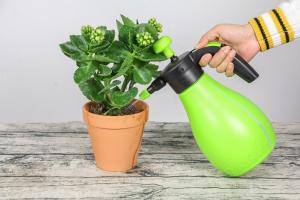How to Make a Water Bottling Plant
Bottled water is becoming increasingly popular as people demand clean and safe drinking water. If you're thinking of starting a water bottling plant, this guide will walk you through the steps you need to take to make it happen.
1. Conduct a Feasibility Study
The first step to making a water bottling plant is to conduct a feasibility study. This will help you determine if your business idea is viable and if there is a market for your product. You also need to consider the costs involved in setting up a bottling plant.
When conducting your feasibility study, you need to consider the following factors:
Market demand for bottled water in your area
Competition in the bottled water industry
The cost of setting up a bottling plant
The cost of raw materials and packaging
The regulatory requirements for operating a bottling plant
Based on your feasibility study, you will be able to determine if it is financially feasible to start a water bottling plant.
2. Obtain the Necessary Permits and Licenses
Before you can start operating a water bottling plant, you need to obtain the necessary permits and licenses. The regulations governing the water bottling industry vary depending on your location, so you need to check with your local authorities to find out what permits and licenses you need to obtain.
Some of the permits and licenses you may need to obtain include:
Business license
Food and drink manufacturing permit
Water withdrawal permit
Environmental impact assessment clearance
It's important to obtain all the necessary permits and licenses before you start operating your water bottling plant to avoid legal problems down the line.
3. Choose the Right Location
The location of your water bottling plant is critical to its success. You need to choose a location that is easily accessible to your customers and suppliers. You also need to consider the cost of land, utilities, and transportation.
When choosing the location for your bottling plant, you need to consider the following factors:
Proximity to your customers and suppliers
Availability of utilities, such as electricity and water
Accessibility to major transportation routes
Cost of land and utilities in the area
Choosing the right location for your water bottling plant can help you save costs and increase your profitability.
4. Install the Necessary Equipment
Once you have obtained the necessary permits, licenses, and chosen the location for your water bottling plant, the next step is to install the necessary equipment. The equipment you need will depend on the size and capacity of your bottled water plant.
Some of the equipment you may need to install include:
Water purification and treatment equipment
Bottle washing, filling, and capping machines
Packaging machines
Labeling machines
Conveyors
It's essential to invest in high-quality equipment to ensure that your bottled water meets the highest standards of quality and safety.
5. Hire and Train Your Staff
The success of your water bottling plant depends on the quality of your staff. You need to hire qualified and experienced personnel and provide them with the necessary training to ensure that they can operate the bottling plant efficiently and safely.
Some of the staff you may need to hire include:
Plant managers
Production supervisors
Maintenance personnel
Quality control personnel
Machine operators
Logistics personnel
Provide your staff with regular training and professional development opportunities to help them stay up-to-date with the latest industry trends and best practices.
Conclusion
Starting a water bottling plant requires careful planning and preparation. You need to conduct a feasibility study, obtain the necessary permits and licenses, choose the right location, install the necessary equipment, and hire and train your staff. With proper planning and investment, you can start a profitable water bottling plant that provides clean and safe drinking water to your customers.

 how many times do yo...
how many times do yo... how many planted tre...
how many planted tre... how many pine trees ...
how many pine trees ... how many pecan trees...
how many pecan trees... how many plants comp...
how many plants comp... how many plants can ...
how many plants can ... how many plants and ...
how many plants and ... how many pepper plan...
how many pepper plan...






























